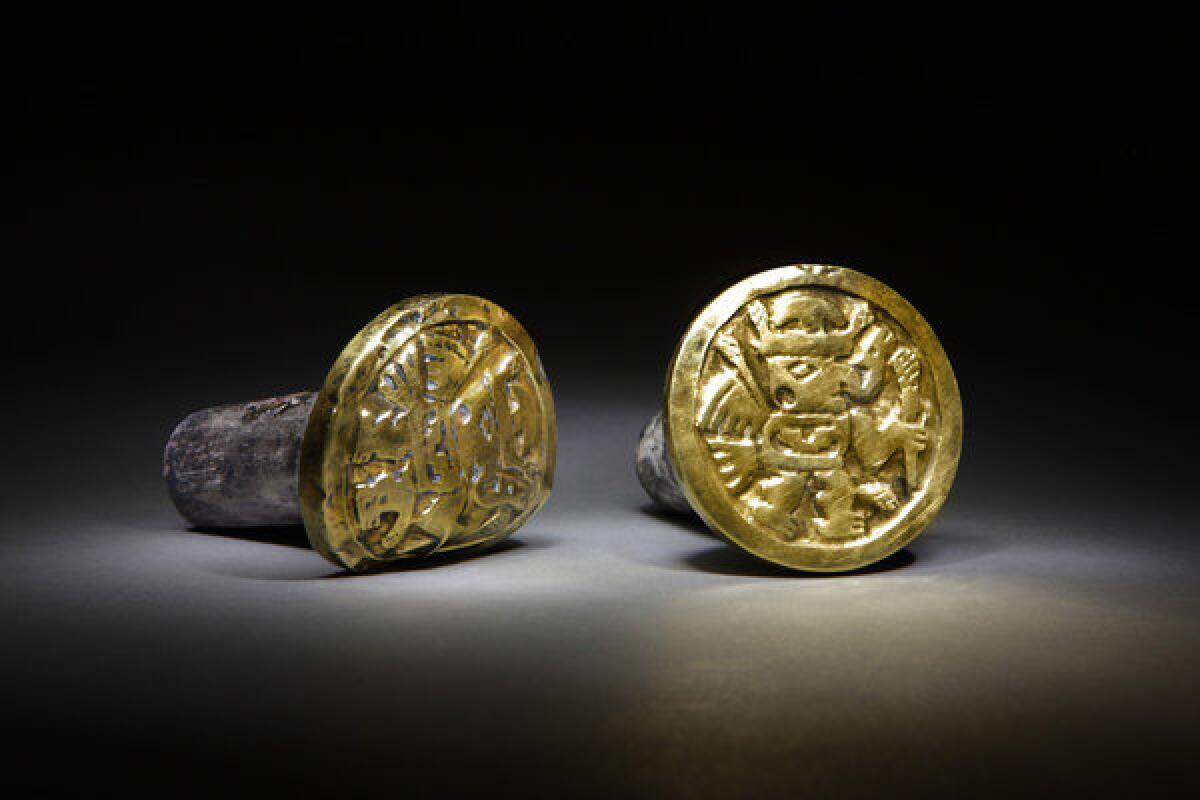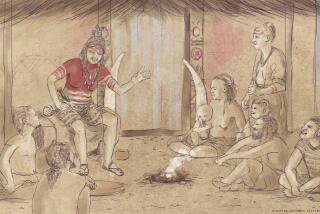Untouched royal Wari tomb found in Peru predates Inca civilization

- Share via
Archaeologists have discovered a hidden tomb of the Wari, a monument from an early civilization that predated the Inca, nestled in a site 175 miles north of Lima, Peru. The funerary chamber, ensconced in a stepped pyramid, had been filled with more than 1,200 artifacts, including gold- and silver-inlaid jewelry, ceremonial axes, looms and spindles.
The Wari mausoleum at El Castillo de Huarmey is the first pyramid discovered at the site that has not been looted, Milosz Giersz, an archaeologist at the University of Warsaw who headed the expedition, said in an interview. It holds an altar-like throne and the bodies of 63 people, mostly women. Bodies were placed in seated position and wrapped in disintegrating cloth. Some were probably human sacrifices, and three of them are thought to be Wari queens.
“We know little about this culture,” Giersz said, “and this discovery is the first one which brings us so much information about the funerary practices of the highest-ranking elite and the role of the woman in pre-Hispanic times.”
The artifacts included ear-ornaments called orejeras, rattles, looms, spindles, as well as ceramics from all over the realm. A rare alabaster vessel bears depictions of fights between the coastal warriors and foreign invaders.
The Wari were an Andean civilization that flourished in the coastal regions from roughly 500 AD to 1000 AD, well before the Inca empire’s 13th century rise. But very little is known about the Wari, because they appear to have left no written record of their lives. The Inca, though they were destroyed by the Spanish conquistadors, were also documented by them, and so archaeologists have a better record of their society.
For archaeologists studying the Wari, such pristine finds are invaluable additions to understanding this ancient culture, Giersz said.
The temple site sits just 131 feet above sea level and is 656 feet long, 197 feet wide and 66 feet high, he added.
The discovery, funded by Poland’s National Science Center and supported by the National Geographic Society, is just the beginning, Giersz said. The researchers hope to investigate other structures around the site in the hopes of finding other undisturbed tombs.







